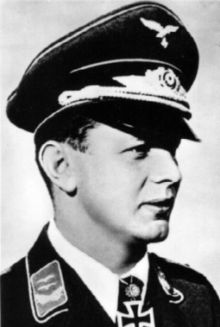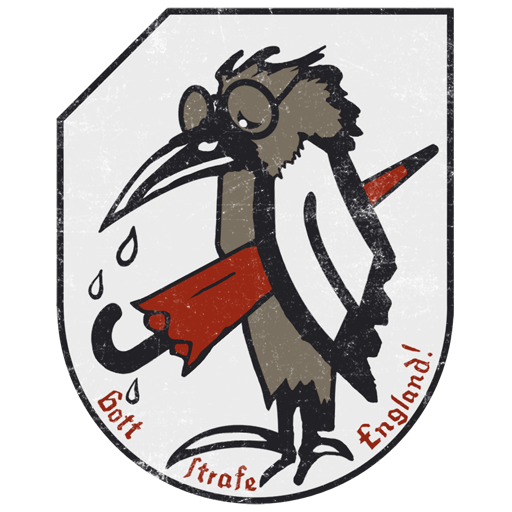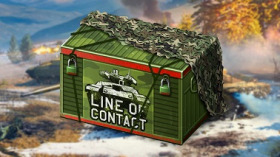
- For PC
- For MAC
- For Linux
- OS: Windows 10 (64 bit)
- Processor: Dual-Core 2.2 GHz
- Memory: 4GB
- Video Card: DirectX 11 level video card: AMD Radeon 77XX / NVIDIA GeForce GTX 660. The minimum supported resolution for the game is 720p.
- Network: Broadband Internet connection
- Hard Drive: 23.1 GB (Minimal client)
- OS: Windows 10/11 (64 bit)
- Processor: Intel Core i5 or Ryzen 5 3600 and better
- Memory: 16 GB and more
- Video Card: DirectX 11 level video card or higher and drivers: Nvidia GeForce 1060 and higher, Radeon RX 570 and higher
- Network: Broadband Internet connection
- Hard Drive: 75.9 GB (Full client)
- OS: Mac OS Big Sur 11.0 or newer
- Processor: Core i5, minimum 2.2GHz (Intel Xeon is not supported)
- Memory: 6 GB
- Video Card: Intel Iris Pro 5200 (Mac), or analog from AMD/Nvidia for Mac. Minimum supported resolution for the game is 720p with Metal support.
- Network: Broadband Internet connection
- Hard Drive: 22.1 GB (Minimal client)
- OS: Mac OS Big Sur 11.0 or newer
- Processor: Core i7 (Intel Xeon is not supported)
- Memory: 8 GB
- Video Card: Radeon Vega II or higher with Metal support.
- Network: Broadband Internet connection
- Hard Drive: 62.2 GB (Full client)
- OS: Most modern 64bit Linux distributions
- Processor: Dual-Core 2.4 GHz
- Memory: 4 GB
- Video Card: NVIDIA 660 with latest proprietary drivers (not older than 6 months) / similar AMD with latest proprietary drivers (not older than 6 months; the minimum supported resolution for the game is 720p) with Vulkan support.
- Network: Broadband Internet connection
- Hard Drive: 22.1 GB (Minimal client)
- OS: Ubuntu 20.04 64bit
- Processor: Intel Core i7
- Memory: 16 GB
- Video Card: NVIDIA 1060 with latest proprietary drivers (not older than 6 months) / similar AMD (Radeon RX 570) with latest proprietary drivers (not older than 6 months) with Vulkan support.
- Network: Broadband Internet connection
- Hard Drive: 62.2 GB (Full client)

Fw 190A-8 of Geschwaderkommandant of JG26 Josef "Pips" Priller, France 1944,
camouflage made by PaganiZonda | download here
Born in Ingolstadt, Bavaria on July 27th 1915, Josef Priller grew up in an interwar Germany first ravaged by the aftermath of the First World War and then witnessing the immense change to the nation brought about by Hitler’s rise to power. A mediocre student who largely stayed out of trouble, he had an aptitude for history and maths but, although he enjoyed outdoor pursuits with friends, Priller was not gifted at sports and athletics as a child. However, as an adolescent Priller became a slightly more aggressive and insular young man.
 |
After school, Priller briefly served in the infantry from 1935 to 1936 when he then transferred to the fledgling Luftwaffe with aspirations of becoming a pilot. In October he commenced flying training at Saldwedel in northern Germany. Flamboyant, aggressive and a good natural aviator, PRiller was selected for fighters and joined his first front line unit – I./JG 135 – in April 1937. When war broke out, PRiller was serving with the Bf109 equipped I./JG 71. Only a month later, whilst the Geschwader was being redesignated to JG 51, Priller was appointed Staffelkapitän of 6./JG 51.
A fiery leader who combined an outspoken nature with a razor sharp sense of humour, the diminutive, 5’ 04” fighter pilot was popular with his men. It was not until May 28th 1940 when Priller confirmed his first kill, an RAF Spitfire to the northwest of Dunkirk. Later on the same day he also shot down a Hurricane. By the end of the Battle of France, Priller had shot down six enemy aircraft.
Priller led his staffel into combat against the RAF again during the Battle of Britain. By the time he left JG 51 in mid October, he had shot down 20 enemy aircraft, resulting in the award of the Knight’s Cross. A military man with little time for politics, Priller painted his kill markings directly over the top of the swastika on the tailfin of his Bf109. His dry sense of humour also extended to combat – on one occasion, one of his more junior pilots strayed away from the protection of his formation over England. The new pilot, now alone and afraid, cried out for help over the radio and reported that he was alone over London. Priller, who could see the pilot clearly, told him not to worry because two Spitfires were closing with him from behind and he would not be alone for much longer.
In November, Priller was posted to 1./JG 26, again as Staffelkapitän. However, despite regular clashes with British aircraft, Priller did not confirm another kill for the rest of the year and his unit was withdrawn from frontline operations over winter. Upon resuming operations at the Channel front, Priller’s return to action was explosive: he shot down 24 enemy aircraft in June and July of 1941 alone, the majority of which were Spitfires. He was awarded the Oak Leaves to his Knight’s Cross following his 40th kill, and then promoted to Hauptmann to take command of III./JG 26 in December 1941.
1942 saw Priller leading from the front against the increasing number of continental operations fielded by the RAF, particularly Fighter Command. Priller’s III Gruppe contributed to the overall success of JG 26 in North West Europe where, due to some units being stationed at Abbeville in Northern France, allied crews took to referring to JG 26 as the ‘Abbeville Boys’ and rumours spread that the unit was composed of hand picked, elite pilots. By the end of the year Priller had shot down over 80 enemy aircraft and on January 11th 1943 he was given command of JG 26 in its entirety.
 |
| "Lady Liberty", a B-17 Flying Fortress, was shot down over the Netherlands by Priller in 1943 |
As the leading ace of the entire Geschwader, Priller’s standards were formidable. Only a month after taking command, III/JG 54 was transferred to his control from the Eastern Front and after carrying out his inspection of the unit he refused to declare them operational until they met his requirements. Whilst Priller continued to fly operationally, he was also now tasked with the increased administrative burden of command; in addition, his expert opinion was sought on the trials of new weapons and equipment.
As a result, 1943 saw a steady decline in Priller’s personal contribution to operational flying – his absence was felt by the Geschwader, particularly with an increasing number of USAAF heavy bombers pouring across the English Channel from their bases in Britain. Priller’s last kill of 1943 was a B-17 of the 96th Bomber Group, which he shot down on October 20th to become his 95th victory. It would be some six months until Priller’s next kill – another B-17.
With the Allied invasion of Normandy on June 6th 1944, JG 26 was caught during a transitional period of shuffling its aircraft around several airbases. Only the HQ element were in a position to mount an immediate attack – the 1962 Hollywood blockbuster movie ‘The Longest Day’ immortalized Priller’s actions at Sword beach, where he and his wingman carried out strafing runs against British ground forces with their Focke-Wulf FW190s. His actual narrative in the movie is a highly fictional account, although his aggressive, no nonsense approach to his seniors is at least acknowledged!
On June 15th, Priller scroed his 100th victory. Whilst leading his fighters against a large American bomber formation, he attacked a B-24 of the 492nd Bomber Group, flying position in the left of the lead vic of three bombers. Attacking from head on, he observed his fire striking the cockpit and both engines on the left wing before diving away. He saw the bomber plummeting towards the ground with flames pouring back from three engines. Priller’s next, and final victory was on October 12th, when he shot down a P-51. This final victory was more symbolic of Priller’s combat career – the vast majority of his kills were single engine fighters and he achieved fame as the greatest Spitfire killer of all time, having shot down more of that aircraft type than any other pilot in history.
Priller’s final operational sortie came on January 1st 1945, when he led JG 26 on Operation Bodenplatte, the costly attempt to attack allied airfields established in the Low Countries. At the end of the month he was appointed as Inspector of Day Fighters (East), a post he held until the end of hostilities. After the war he married and became the manager of a brewery in Augsburg in his home state of Bavaria. He tragically succumbed to a heart attack in May 1961, passing away at the age of 45.
In one of the upcoming patch we will introduce Emblem of JG 51 "Weeping Raven"

Decal created by Jej 'CharlieFoxtrot' Ortiz
About The Author
 |
Mark Barber, War Thunder Historical Consultant Mark Barber is a pilot in the British Royal Navy's Fleet Air Arm. His first book was published by Osprey Publishing in 2008; subsequently, he has written several more titles for Osprey and has also published articles for several magazines, including the UK's top selling aviation magazine 'FlyPast'. His main areas of interest are British Naval Aviation in the First and Second World Wars and RAF Fighter Command in the Second World War. He currently works with Gaijin Entertainment as a Historical Consultant, helping to run the Historical Section of the War Thunder forums and heading up the Ace of the Month series. |



